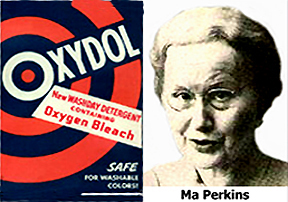Several folks responded to my Biff-Burger column, revering the tasty little saucy burgers to this day.
William Dyer replied first: “I read with interest your recent column about the Biff-Burger once located on (West) Market Street. I suppose it was appealing to me because my nickname is ‘Biff’ and to this day some people still call me ‘Biff-Burger.’ My mother tells me that I did not derive my name from the well-known eatery; instead, she got her brilliant idea from a popular soap opera star, Biff McGuire, on ‘Another World.’ I can only picture my beautiful mother, Ruby Evelyn, sitting in front of her black and white TV, devouring a delicious roto-broiled hamburger with 27 secret spices, watching some suave ladies’ man make his move on a poor unsuspecting damsel.”
Harriet Baker dropped me this note: “You will probably be delighted to know that our employee, Jim Nave, was a former manager of Biff-Burger and has the recipe in his brain. One of the points that he made was that the meat patties have to be really thin and the buns toasted. Jim made them for SHHS graduates at a picnic a couple of years ago; maybe we could get him to cook some for lunch one day.”
Bill Durham offered this correspondence: “Thanks to your column, I've been craving a Biff-Burger since 6:30 this morning. I can still think about them and my taste buds go into overdrive. Thanks for reminding me of yet another intangible I long for but can no longer have. We've lost so much of what we used to take for granted, haven't we?”
Bill Ledford submitted this most welcomed news: “I thought you might enjoy knowing that the Biff-Burger is still in St. Petersburg, Florida. I am also an old fan of that great burger and plan on stopping by for one shortly when we go to Florida.”
After receiving Ledford’s note, I contacted my second cousin, Jean Moore, who lives in St. Petersburg and beseeched her to find the place and consume a Biff-Burger. When Jean drove to the establishment, she immediately recognized the distinctive architecture: “Most of the employees were too young to remember when the restaurant was in its heyday. However, one old timer did, fondly recalling the 1950s business. I went to the order window and glanced at their huge menu. I quickly spotted ‘Biff’ as the first item of several charbroiled burger selections. The price of the Biff has increased from the half-century ago price of 15 cents to 99 cents. I was not sure it was the same burger I remembered, but I was about to find out. I placed my order for a Biff and waited patiently. Unlike the original restaurants, this one did not allow me to see the burger being prepared. I held my breath hoping that I would not be disappointed.”
Jean said she knew it was the real thing just by observing the petite patty on a sesame seed bun and smelling the tantalizing spicy aroma. She confirmed her suspicions when she munched into it. She said for a few brief pleasurable moments, it was like stepping back into the 1950s.
I will feature the remembrances of former Johnson City Biff-Burger manager, Jim Nave, in a future column.



